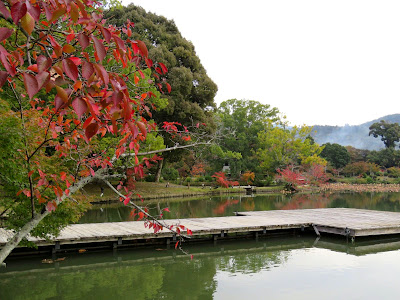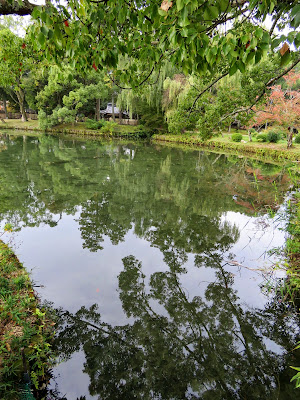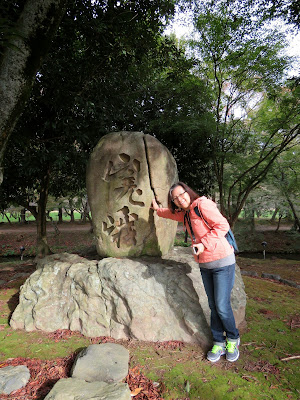
The man-made pond Osana-No-Ike at the temple grounds of Daikaku-ji Temple site was most probably built during the reign of Emperor Saga (809-823) or perhaps in his retirement period in 9th century. The water pond was based on the example of Chinese Tunting Lake and created from the stream running down from Nakoso Waterfall before the establishment of Temple. It is set into a particularly ideal location for viewing the rising of moon from the boats.


Emperor Saga (786-842)was a poet, calligrapher and good in arts of Ikebana Flower arrangement. He built the huge Osawa man-made water pond to serve as a recreation venue for the imperial members to have outdoor activities like boating, fishing, moon viewing. Elaborate parties featured costume dances, music and dragon boating, were organized at the pond for a continuation of three days in every autumn.



The Osawa pond with an area of 2.4 hectares is the largest and oldest Shinden Styled water pond surviving for 1200 years.


Surrounding Osawa Lake was a Chisen-Shuyu styled imperial garden which could be seen clearly when one was boating on the pond.


There are thousands of lotus growing in the pond and its a magnificent sight in summer when nearly half of the pond is covered with beautiful lotus flowers.


The pond and its large courtyard garden setting between temple buildings has made it a popular park for local residents now.





The pond is particularly attractive with fall foliage and when cherry is blossom in spring.




Walking around the garden and enjoy the natural scenery












We were greeted by these huge carps when approaching the water pond. It's so sorry we did not bring any food for them.




The surrounding garden is a place you get in touch with nature.



The Two tiers Tahoto styled pagoda was erected to commemorate the 1150th anniversary of Emperor Saga writing the sacred Heart Sutra.



The full name of Heart Sutra read as The Heart of Prajna Paramita Sutra. It says that when Bodhisattva Avalokiteshvara was practicing the Profound, he illuminated the five Skandhas and saw that they are all empty, and he crossed beyond all sufferings and difficulties.....The five Skandhas are Form, Feeling, Cognition, Formations and Consciousness. Two characters of Five Skandhas are carved on the rock in front of Tahoto Pagoda.



A network of walking paths leading to its insight began from here.



A farm of apricot trees


The lush area that lies side by side with Osawa Pond.


The dried up lotus leaves in the pond look just like pieces of art.



There are two islands at the north end of Osawa Pond. The smaller one is named as Chrysanthmum Island. The several little rocky inlets between the two islands are said to resemble junks at anchor.


Read the history of Osawa Pond from here !


It is indeed a comfortable home to wild animals and birds including ducks, heron, egrets, cormorants, doves and many others.


Heron make tree tops their home.


A plant of fruitful wild persimmon and an ancient hundreds year old tree.


The rock carved with name of Arishiyama and some old Buddhist stone images were found placing near Karedaki rock garden on the hillside at the north Osawa Pond.



The elegant Bamboo Grove.




Standing in the serene atmosphere, amidst the wooded nature, are several traditional styled shrines and buildings.


Surrounded the shrines or halls are colorful fall foliage at this moment.










We discovered an old opera house at site, though small in size but cozy in look.


A sight of temple grounds viewed from the pond garden.



I was as if framed into the picture.





No comments:
Post a Comment